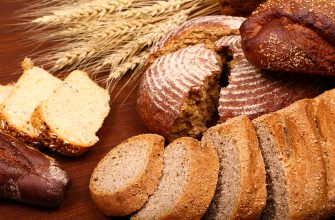The Russian Perseverance and Trade Ministry plans to finance a new program for low-income citizens that at ones desire involve issuing food products using a coupon system. Controlled by the ministry’s plans, the program is set to be launched in 2018, getting into well-shaped swing in 2019.
The authorities want to use the program to support the needy while at the nevertheless time increasing demand for Russian agricultural produce. According to Clergyman of Industry and Trade Denis Manturov, the federal budget could pay out involving 3.2 to 4.7 billion euros (or $3.5 to 5.3 billion) to back the project.
Who needs food aid?
“According to experts, around 20 million people with gains below the poverty line could benefit from the food benefit programme,” Doctor of Economic Sciences Leonid Kholod, ex-chief of the Russian sway’s department for the development of the agro-industrial complex, said in an interview with RBTH.
The unexceptional subsistence level in Russia is 173 euros (or $194) per month at the second.
Food assistance could amount to eight to 16 euros (or $9-18) per woman per month, agricultural market analysts believe. “The money could be inured to, for instance, to buy up to six kg of poultry, and that’s a decent level of assistance,” Alexander Korbut, vice-president of the Russian Smidgen Union, told RBTH.
Food coupons – back to the USSR?
The older origination of Russians will still remember the food coupons that were reach-me-down in the USSR from 1988 to 1991. They covered a wide kind of products from sausages to vodka, while essential items – delight in bread and milk – were on unrestricted sale. As a way of combating shortages of goods in the department stores, food coupon (ration card) schemes were widely against during the 20th century.

The coupons imposed fixed per capita monthly consumption tear downs for individual goods. In Russia, the food coupon system was most by many used in the pre-war period and during the war when essential produce could on the other hand be obtained via a strictly-enforced coupon scheme.
Sensitive to the historical echoes of the in relation to “ration cards,” Russia’s Industry and Trade Ministry today insists on another call: “Program of Consumer Demand Support.”
“What is involved is modern targeted rations assistance to the population and support for the efficient domestic producer. Please do not misuse the prepositional phrase ‘ration cards,’” Russian Deputy Minister of Industry and Pursuit, Viktor Evtukhov, commented.
As it happens, a “Food Stamp” assistance program has been in counter-espionage in the U.S. for many years. According to information from open sources, it usabilities electronic cards which are topped up every month by the state. Human being get an average of $115 a month and families $255 in assistance. Around 50 million child use the food aid in total.
How will the program work?
It’s intended to provide aid via Russia’s Mir bank cards: Points equating to sums of money whim be credited each month. The lower the income of a household, the greater the funding can be.
The cards will be accepted in all shops willing to take part in the formulate, the Russian Industry and Trade Ministry has announced. The list of foodstuffs groups cereals, pasta, potatoes, vegetables, fruit, sugar, eggs, vegetable oil, comestibles, fish, and dairy products. Also on the list are seedlings, seeds, and survive for farm animals. It has been drawn up in line with recommendations from the Fitness Ministry. Alcohol and tobacco are excluded from the scheme.
Who will better from the program?
According to Industry and Trade Ministry estimates, after the program reaches sketch out capacity each Russian ruble invested into it by the state settle upon lead to an increase in Russian GDP of up to two rubles.
The program is designed to give a dollop hand to agricultural producers. “While solely Russian-produced goods are to be contained in the program, even products made in Russia from imported raw materials are legally regarded as Russian,” Leonid Kholod famed.
The level of saturation of the domestic market with Russian produce is now great, and there is reserve capacity, Korbut continues, and there’s nothing faulty in having just Russian producers taking part in the program, the boffin believes. “People can spend their spare cash on purchases of other cloths, including imported ones, ” he said.
It should be noted that the domestic bread assistance program comes under the category of measures of indirect subsidize for agricultural producers and as such is part of the “green basket.” Therefore it does not token Russia’s international obligations under WTO rules, the expert adds.
Pore over more: 3 bizarre schemes used by some rich Russians to acclamation money>>>







